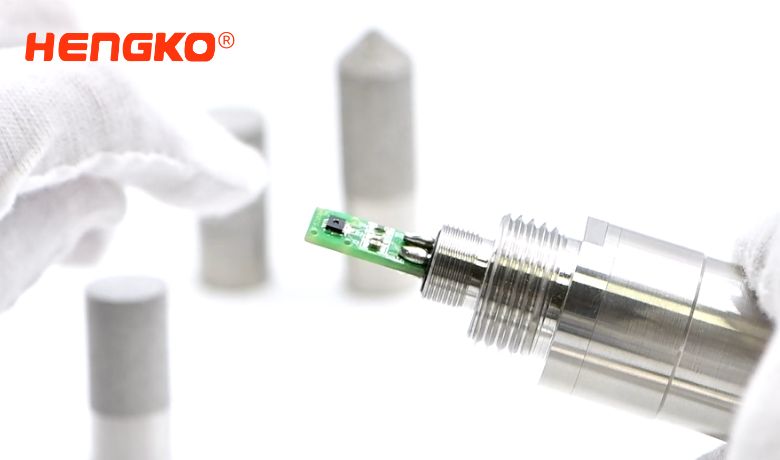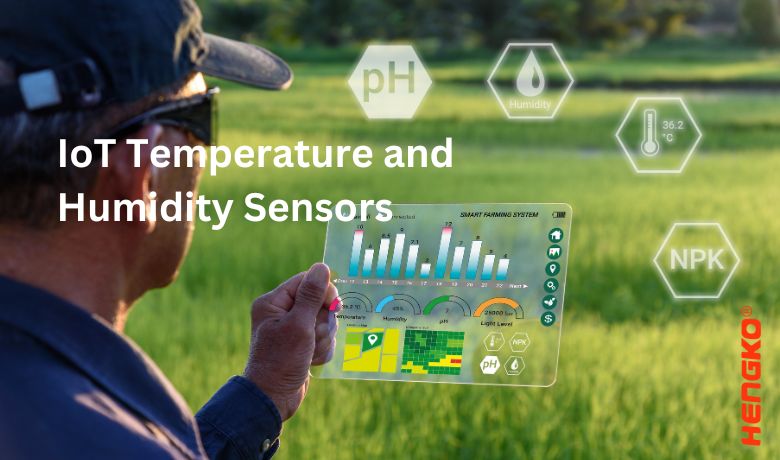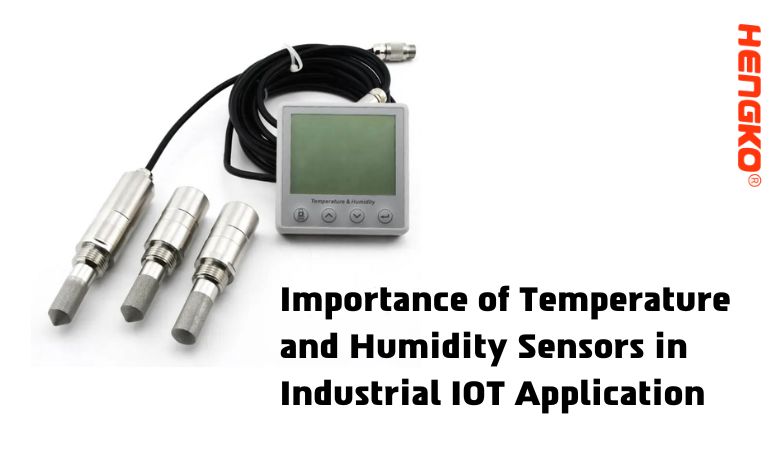The Importance of IoT Temperature and Humidity Sensors in Industrial Applications
As the world becomes increasingly reliant on smart technology, the Internet of Things (IoT) has become an integral part of our daily lives, both personally and professionally. IoT devices and systems have revolutionized industrial applications, making it easier than ever to monitor and control environmental conditions in real-time. One of the most important tools for this purpose is the temperature and humidity sensor.
In this article, we will explore the key features and benefits of IoT temperature and humidity sensors in industrial settings. We will discuss what humidity sensors and temperature sensors are and how they work, the different types of IoT devices that measure temperature and humidity, the advantages of using IoT temperature and humidity sensors with Wi-Fi connectivity, the different types of temperature sensors used in IoT applications, and how to choose the best humidity and temperature sensor for your specific needs.
Why it is so important IoT Temperature and Humidity Sensors in Industrial Application
Temperature and humidity are critical elements of industrial processes, and ensuring they are accurately monitored is critical. IoT temperature and humidity sensors provide accurate readings and data collection while improving time efficiency by remotely monitoring and adjusting temperature and humidity levels. This capability can increase productivity, reduce costs and increase energy efficiency.
IoT temperature and humidity sensors work by collecting data through embedded sensors and communicating that information to a central system. This allows temperature and humidity to be controlled at every stage of the production process, preventing environmental factors from spoiling or damaging merchandise. Additionally, the sensors are able to adapt to fluctuations and dynamically control temperature and humidity levels based on processing needs.
Advantage of IoT Temperature and Humidity Sensors
The advantages of IoT temperature and humidity sensors are really impressive. By automatically monitoring and adjusting temperature and humidity levels, industrial applications can prevent product spoilage, reduce energy usage and increase the efficiency of process automation. This all leads to an increase in the quality and quantity of the output, thereby increasing the profit margins of the businesses that use these sensors.
Application of IoT Temperature and Humidity Sensors
Industries that use these sensors include food and beverage, pharmaceutical, and climate-controlled storage, among others. For example, wineries use these sensors as part of the fermentation process, enabling production facilities to control and monitor the temperature of the grape juice during fermentation, resulting in a consistently high-quality product.
In the pharmaceutical industry, IoT temperature and humidity sensors have been helpful in maintaining the temperature and humidity levels of medical products during storage, transportation and processing, thereby eliminating the risk of spoilage or contamination. Additionally, IoT sensors reduce the time required to test the quality of these products while automatically collecting information, thereby eliminating human error.
Implementing IoT temperature and humidity sensors in industrial applications requires preparation and planning, including careful consideration of product requirements and application environment. Choosing the right sensor can help prevent issues that could lead to poor product quality or additional costs.
In conclusion, the implementation of IoT temperature and humidity sensors in industrial applications brings much needed automation and optimization. With new levels of efficiency, accuracy and production, industries of all kinds are now benefiting from the ability to remotely and accurately monitor and adjust temperature and humidity levels. The enhanced ability to prevent spoilage, reduce energy use and lower production costs can lead to higher quality, more profitable output for business owners.
The Internet of Things continues to evolve, providing answers to more complex questions in the industrial world. Professionals in the field, such as [Charlas Bukowski], are using these technologies as an important part of new industrial applications. By adopting this technology, industrial applications can remain competitive in a rapidly evolving market.
FAQs About IoT Temperature and Humidity Sensors
What are Humidity Sensors in IoT?
Humidity sensors are electronic devices that measure the amount of moisture in the air. These sensors can be used in a variety of applications, including HVAC systems, data centers, and industrial environments. In IoT, humidity sensors can be connected to a network and used to monitor and control environmental conditions in real-time.
Humidity sensors work by measuring the change in electrical capacitance caused by the absorption of moisture on a surface. This change in capacitance is then converted into a digital signal, which can be transmitted to a network or device for analysis.
What are Temperature Sensors in IoT?
Temperature sensors are devices that measure the temperature of an object or environment. These sensors can be used in a wide range of applications, including food storage, pharmaceuticals, and industrial processes. In IoT, temperature sensors can be connected to a network and used to monitor and control temperature in real-time.
There are several types of temperature sensors that can be used in IoT applications, including thermocouples, RTDs, and thermistors. The type of sensor used will depend on the specific application and environmental conditions.
How Do Humidity Sensors Work in IoT?
Humidity sensors work by measuring the change in electrical capacitance caused by the absorption of moisture on a surface. This change in capacitance is then converted into a digital signal, which can be transmitted to a network or device for analysis.
Which IoT Devices Measure Temperature and Humidity?
There are several IoT devices that can be used to measure temperature and humidity. These devices include wireless sensors, smart thermostats, and environmental monitoring systems.
What is IoT Temperature and Humidity Sensor Wi-Fi?
IoT temperature and humidity sensors with Wi-Fi connectivity allow for remote monitoring and control of environmental conditions. These sensors can be connected to a network and accessed via a smartphone, tablet, or computer.

What is the Best Humidity and Temperature Sensor?
The best humidity and temperature sensor will depend on the specific application and environmental conditions. Factors to consider when choosing a sensor include accuracy, reliability, and cost.
Some of the advantages of using IoT temperature and humidity sensors in industrial applications include improved efficiency, reduced costs, and increased safety for employees and products. By using these sensors, businesses can ensure that their products are stored in optimal conditions, reducing the risk of spoilage, and improving overall product quality.
In conclusion, IoT temperature and humidity sensors are essential tools for monitoring and controlling environmental conditions in industrial settings. By choosing the right sensors, businesses can improve efficiency and safety while reducing costs.
If you have any questions about IoT temperature and humidity sensors or would like to learn more about our products, please contact us at ka@hengko.com.
Send your message to us:
Post time: Mar-29-2023






